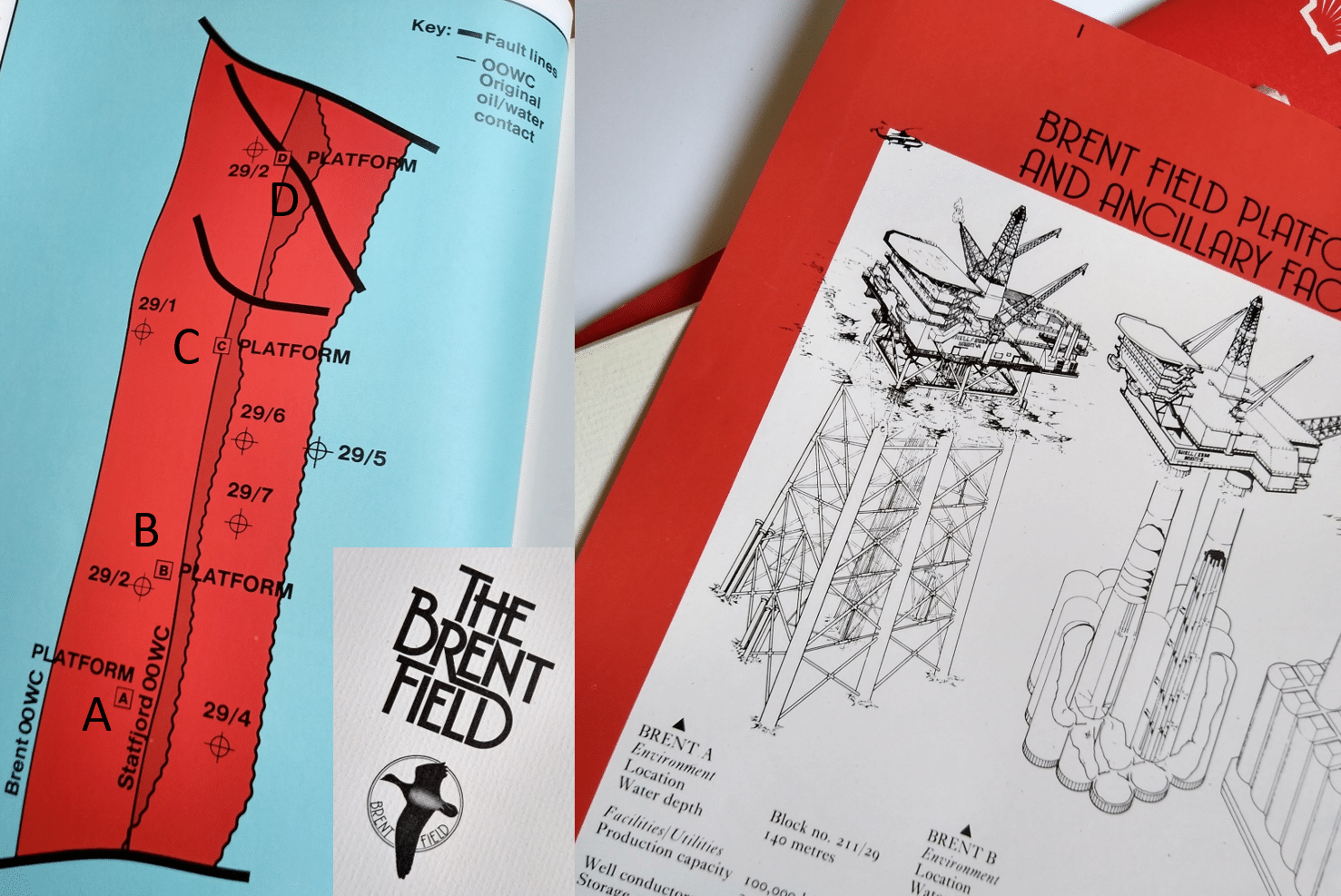Last Sunday, the Brent Alpha platform was lifted by Allseas’ Pioneering Spirit in an operation that only took nine seconds. It was the southernmost platform of the field and the only one that had a steel jacket, which weighs around 31,500 tonnes and was installed in 1976.
Brent Bravo was taken away last year and Brent Delta in 2017. The only platform remaining is Brent Charlie.
The image shows the outline of the Brent field and the location of the four platforms from a public domain Shell report on North Sea Fields (Facts and Figures, 1982). The picture of the Brent Alpha platform is from a brochure on the Brent field published in 1976.
The Brent field was discovered by Shell in 1971, but the results were only announced a year later. It was the first discovery in the Northern North Sea and sparked an oil bonanza in the following years.
The oil is hosted in a classic tilted fault block of Middle Jurassic age. As the Shell brochure describes: “Lying below a major discontinuity at the base of the Cretaceous sequence, these rocks formed chains of features resembling buried hills and valleys, which, indeed, is what they turned out to be.”
The Brent field takes its name from the brent goose, as Shell UK initially named its discoveries after waterbirds (the first one was Auk). In addition, Brent was used as an acronym to name the Middle Jurassic formations in which the oil was found: Broom, Rannoch, Etive, Ness and Tarbert.
HENK KOMBRINK





